PRODUCT LIFE CYCLE Lexics To find
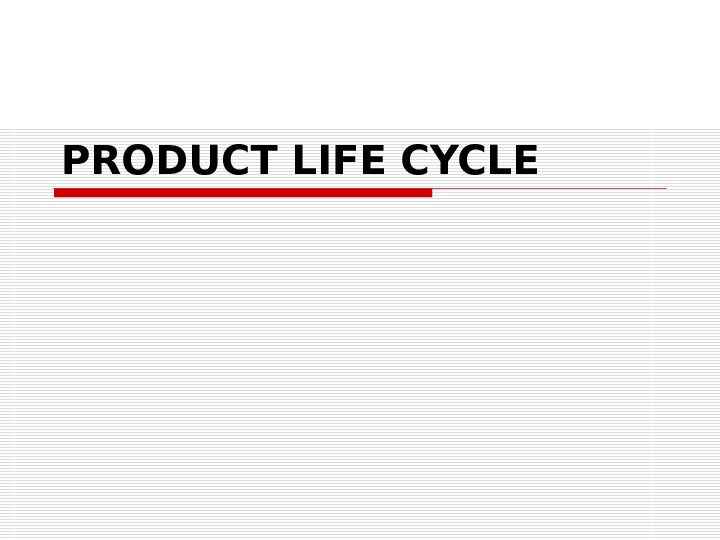
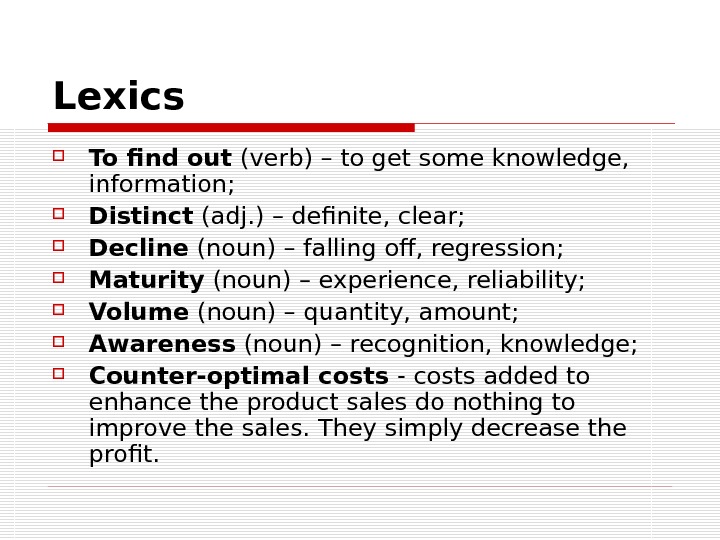
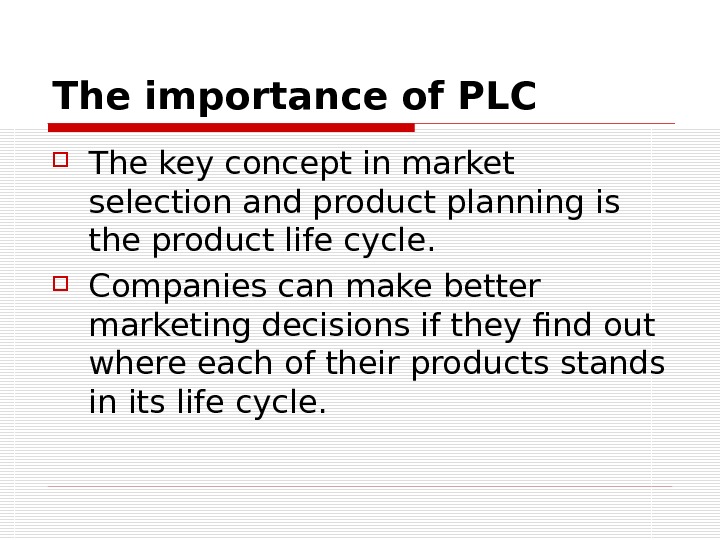
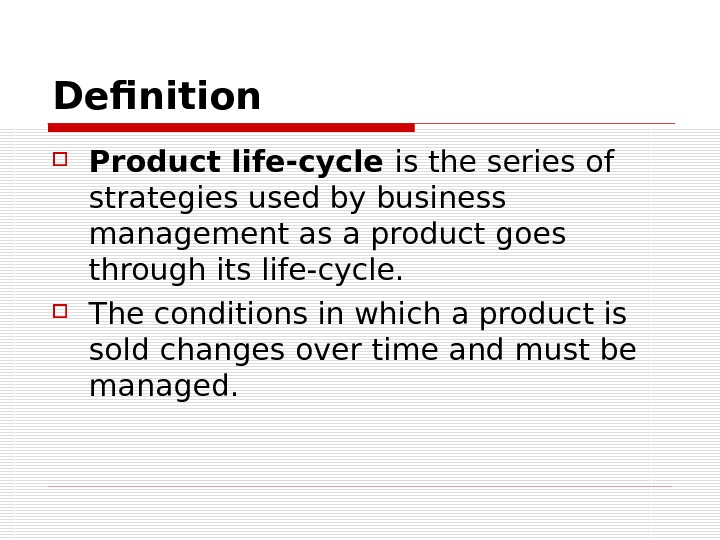
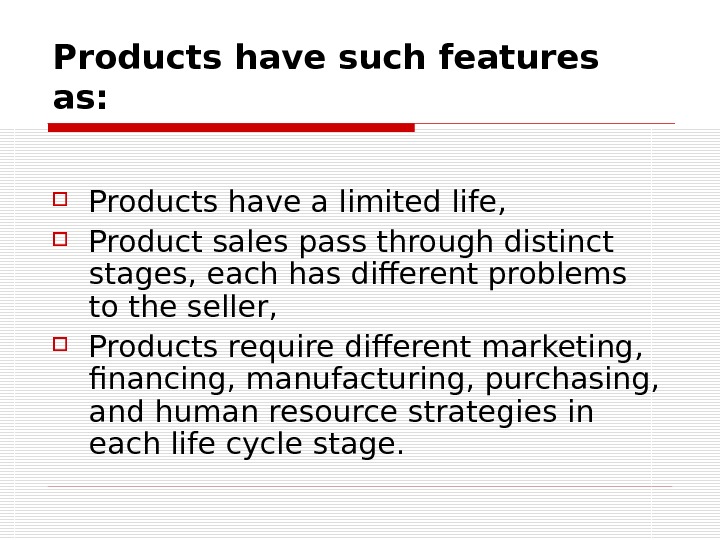
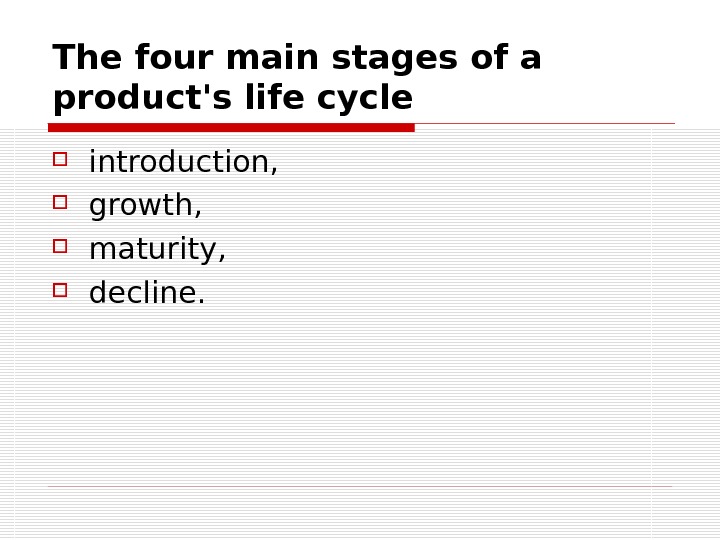
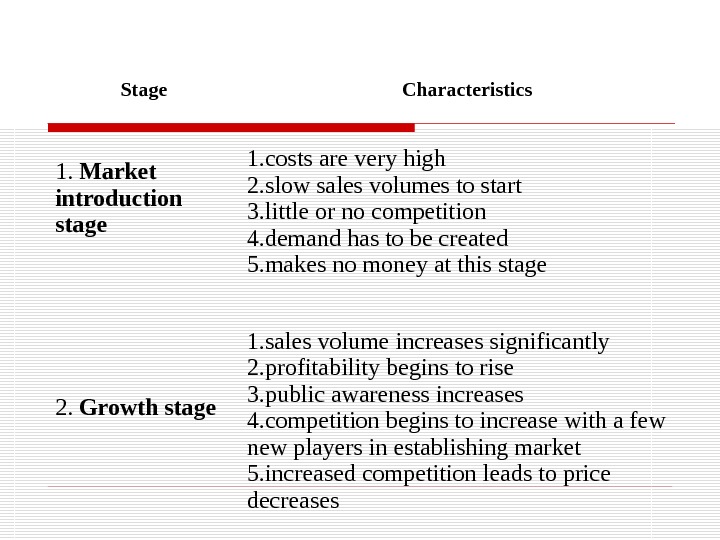
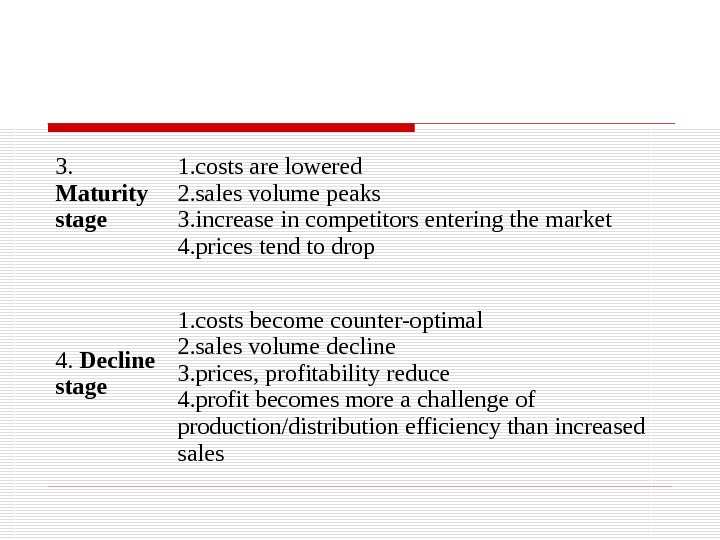
- Размер: 39 Кб
- Количество слайдов: 8
Описание презентации PRODUCT LIFE CYCLE Lexics To find по слайдам
 PRODUCT LIFE CYCL
PRODUCT LIFE CYCL
 Lexics To find out (verb) – to get some knowledge, information; Distinct (adj. ) – definite, clear; Decline (noun) – falling off, regression; Maturity (noun) – experience, reliability; Volume (noun) – quantity, amount; Awareness (noun) – recognition, knowledge; Counter-optimal costs — costs added to enhance the product sales do nothing to improve the sales. They simply decrease the profit.
Lexics To find out (verb) – to get some knowledge, information; Distinct (adj. ) – definite, clear; Decline (noun) – falling off, regression; Maturity (noun) – experience, reliability; Volume (noun) – quantity, amount; Awareness (noun) – recognition, knowledge; Counter-optimal costs — costs added to enhance the product sales do nothing to improve the sales. They simply decrease the profit.
 The importance of PLC The key concept in market selection and product planning is the product life cycle. Companies can make better marketing decisions if they find out where each of their products stands in its life cycle.
The importance of PLC The key concept in market selection and product planning is the product life cycle. Companies can make better marketing decisions if they find out where each of their products stands in its life cycle.
 Definition Product life-cycle is the series of strategies used by business management as a product goes through its life-cycle. The conditions in which a product is sold changes over time and must be managed.
Definition Product life-cycle is the series of strategies used by business management as a product goes through its life-cycle. The conditions in which a product is sold changes over time and must be managed.
 Products have such features as: Products have a limited life, Product sales pass through distinct stages, each has different problems to the seller, Products require different marketing, financing, manufacturing, purchasing, and human resource strategies in each life cycle stage.
Products have such features as: Products have a limited life, Product sales pass through distinct stages, each has different problems to the seller, Products require different marketing, financing, manufacturing, purchasing, and human resource strategies in each life cycle stage.
 The four main stages of a product’s life cycle introduction, growth, maturity, decline.
The four main stages of a product’s life cycle introduction, growth, maturity, decline.
 Stage Characteristics 1. Market introduction stage 1. costs are very high 2. slow sales volumes to start 3. little or no competition 4. demand has to be created 5. makes no money at this stage 2. Growth stage 1. sales volume increases significantly 2. profitability begins to rise 3. public awareness increases 4. competition begins to increase with a few new players in establishing market 5. increased competition leads to price decreases
Stage Characteristics 1. Market introduction stage 1. costs are very high 2. slow sales volumes to start 3. little or no competition 4. demand has to be created 5. makes no money at this stage 2. Growth stage 1. sales volume increases significantly 2. profitability begins to rise 3. public awareness increases 4. competition begins to increase with a few new players in establishing market 5. increased competition leads to price decreases
 3. M aturity stage 1. costs are lowered 2. sales volume peaks 3. increase in competitors entering the market 4. prices tend to drop 4. D ecline stage 1. costs become counter-optimal 2. sales volume decline 3. prices, profitability reduce 4. profit becomes more a challenge of production/distribution efficiency than increased sales
3. M aturity stage 1. costs are lowered 2. sales volume peaks 3. increase in competitors entering the market 4. prices tend to drop 4. D ecline stage 1. costs become counter-optimal 2. sales volume decline 3. prices, profitability reduce 4. profit becomes more a challenge of production/distribution efficiency than increased sales
